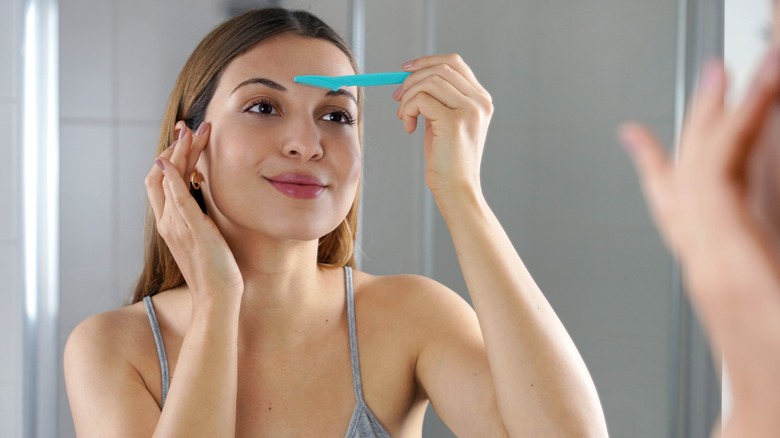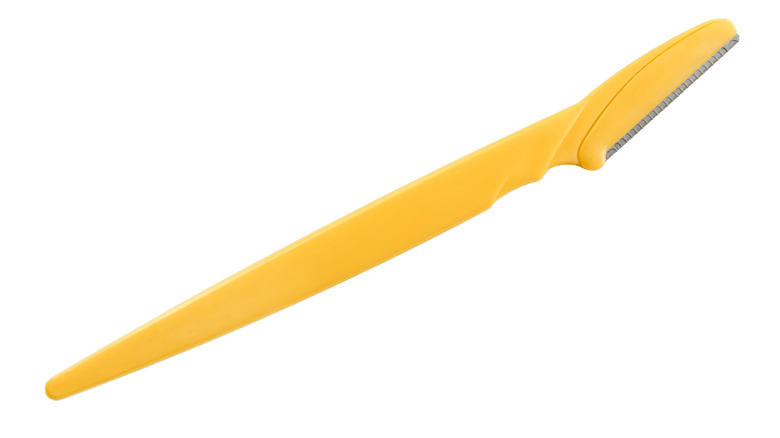You Need To Be Cleaning Your Dermaplaning Razor The Right Way - Here's How
If you're looking for smooth and hairless skin on your face, you've probably heard of dermaplaning. The temporary, non-invasive procedure removes the outer layer of your skin and hair, and has become popular because it gives your face a fresh base to absorb skincare and makeup.
You can get a dermaplaning procedure at any dermatologist's office, but it is also possible to dermaplane at home with a dermaplaning razor. Using gentle pressure, this tool — which features an angled blade — can smoothly remove dead skin and unwanted facial hair.
While many know the basics of the dermaplaning procedure, there is a step in the process that some skip when dermaplaning at home: cleaning the razor. A dirty dermaplaning razor is much more dangerous than a typical razor blade that you would use for shaving your legs, for example. So much gunk can accumulate on the blade during its use — dead skin, makeup, sebum, sunscreen — and you don't want to reintroduce it to the skin. Sanitizing your dermaplaning razor boosts its efficiency and prevents bacteria from causing acne in the future. Cleaning your blade might seem like a hassle, but it'll make all the difference in your skin's health.
How to clean a dermaplaning razor
Your at-home dermaplaning experience will only be successful if you use a clean razor. Just like in a dermatologist's office, clean tools will save your skin from issues and irritation. Since the razor is meant to scrape your skin, you want to start by sterilizing the blade, even if it's new. Do this by wiping it with rubbing alcohol or having it sit in boiling water for a few minutes. Then, rinse the blade with clean water and wipe it down gently until it's dry. Using too much force when drying it off can lead to cuts or dulling of the blade.
Then, after each use, you want to sterilize and dry the blade again before storing it. Blades should be switched every three to four uses as they will get duller over time. Even if you feel the blade didn't pick up much dead skin or hair, switching it out is crucial after every few uses. You never want to use a dull blade since it can cut your skin and introduce bacteria.
Other precautions to take
As with other skin procedures, you can't take too many precautions. Not sterilizing or cleaning the razor blade can reintroduce dirt and dead skin cells back into the skin, which can cause clogged pores. If you notice breakouts or irritation after a dermaplaning session, consider giving your blade another wipe-down before reattempting. Also, keep in mind that a breakout can also be an allergy to the metal in the blade. If you suspect this may be the case for you, do a patch test on a hidden area of your body to determine if your skin will have any adverse reactions.
Just as your razor blade should be clean, you should also have clean skin before dermaplaning. Using a blade over makeup, oil, or dirt won't give you as many benefits as you will just be removing anything that is sitting on top of the skin. After dermaplaning, giving your skin a good rinse and following up with moisturizer can soothe any inflammation.
You can't be too careful when performing a skin procedure, especially at home and on your face, so be sure to keep your dermaplaning tool in good shape.


